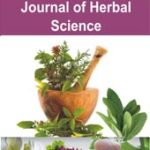[{“box”:0,”content”:”[if 992 equals=”Open Access”]
Open Access
n
[/if 992]n
n
n
n
n
- n t

n
Gyanendra Kumar Gupta, Gagan Devi
[/foreach]
n
n
n[if 2099 not_equal=”Yes”]n
- [foreach 286] [if 1175 not_equal=””]n t
- Professor, Assistant Professor, Department of Kriya Sharir, Shri Babu Singh Jay Singh Ayurvedic Medical College & Hospital, Farrukhabad, Department of Rachna Sharir, Bharat Ayurveda Medical College Hospital & Research Centre, Muzaffarnagar, Uttar Pradesh, Uttar Pradesh, India, India
n[/if 1175][/foreach]
[/if 2099][if 2099 equals=”Yes”][/if 2099]nn
Abstract
nMucuna Pruriens is a very famous drug prescribed in classical ayurvedic science in various disorder of Nervous System including Kampavata .In Clinical Practice ,Physician used Levadopa as a Dopamine replacement agent in controlling bradykinetic symptoms apparent in Parkinson disease so used successfully in treatment of Parkinson disease.Kapikacchu(Mucuna Pruriens) is having Balya, Brimhanaha, Vrishya, and Vatahara properties and is a natural source of L-dopa. So, keeping in views of the degenerative nature of the Kampavata. Kapikacchu was selected for this study because seeds of Mucuna Pruriens are potentially of substantial medicinal importance. Mucuna Pruriens, widely known as Kapikacchu in classical Ayurvedic science, holds a prominent place in the treatment of various nervous system disorders, including Kampavata, which correlates with Parkinson’s disease symptoms. In clinical practice, physicians often utilize Levodopa as a dopamine replacement therapy to manage the bradykinetic symptoms characteristic of Parkinson’s disease, with successful outcomes. Kapikacchu, derived from Mucuna Pruriens, is recognized for its therapeutic properties such as Balya (strength promoting), Brimhanaha (nourishing), Vrishya (aphrodisiac), and Vatahara (pacifying Vata dosha), making it an ideal natural source of L-dopa, the precursor to dopamine. Considering the degenerative nature of Kampavata, Mucuna Pruriens was selected for this study due to the significant medicinal importance of its seeds.
The seeds of Mucuna Pruriens have garnered attention in the medical community for their potential in treating various neurological conditions, owing to their rich content of L-dopa, which can effectively replenish dopamine levels in the brain. This study aims to explore the therapeutic efficacy of Mucuna Pruriens in managing Parkinson’s disease symptoms and its potential as an alternative or adjunct therapy to conventional Levodopa treatment. By delving into the pharmacological properties and mechanisms of action of Mucuna Pruriens, this research seeks to provide insights into its clinical effectiveness, safety profile, and overall impact on the quality of life of Parkinson’s disease patients. Through rigorous investigation and analysis, this study endeavors to shed light on the promising role of Kapikacchu in the management of Parkinson’s disease and pave the way for further exploration and integration of traditional Ayurvedic medicine into modern therapeutic approaches for neurological disorders.
n
Keywords: Mucuna Pruriens, Balya, Brimhanaha, Vrishya, Vatahara, L dopa and Degenerative.
n[if 424 equals=”Regular Issue”][This article belongs to Research & Reviews : Journal of Herbal Science(rrjohs)]
n
n
n
n
n
n
n[if 992 equals=”Open Access”] Full Text PDF Download[/if 992] nn
n[if 379 not_equal=””]nBrowse Figures
n
n
n[/if 379]n
References
n[if 1104 equals=””]n
- Śārṅgadhara., Srikantamurthy, K. R.. Śārṅgadhar-saṃhitā: a treatise of Āyurveda. India: Chaukhambha Orientalia, 1984.
- Vidyanath, R.. Sahasrayogam: Text with English Translation. India, Chowkhamba Sanskrit Series Office, 2006.
- Krishnam S, Gurdip S. A study on Ayurved management of sakampa pakshagvata (Paralysis agitans) PG thesis, 1989. IPGT & RA Jam.
- Nadkarni, A. K.. Dr. K. M. Nadkarni’s Indian Materia Medica: With Ayurvedic, Unani-tibbi, Siddha, Allopathic, Homeopathic, Naturopathic & Home Remedies, Appendices & Indexes. India, Popular Prakashan, 2007.
- Das G. Bhasjya Ratnavali with chandraprabha commentary. Edited by Vaidya Lal Chandraj 8th Edition, Motilal Banarasidas Delhi. 1997.
- Chopra, Ram Nath, et al. Glossary of Indian Medicinal Plants. India, Council of Scientific & Industrial Research, 1956.
- Bhava prakasa with Vidyotini, Hindi Commentary by Brahmasankar Shastri Chaukhambha Sanskrit Series, Banaras (1956)
- Dravyaguna Vigyana, Chaukhambha Surbharti Academy, Varanasi. 9. Das, Govind. “Bhasjya Ratnavali with chandraprabha commentary.” Edited by Vaidya Lal Chandraj 8th Edition, Motilal Banarasidas Delhi(1997).
- Rathod AC, Garje PF. Systemic Review on the Concept of Kamapavata in Ayurveda WSR To Parkinsonism. World Journal of Pharmaceutical Research. 2021 Jan 10;10(3):955-61.
- Narayana DA, Joshi H, Tiwari VH. Overview of approaches in ayurveda for neurological health and disorders. InAyurvedic Herbal Preparations in Neurological Disorders 2023 Jan 1 (pp. 41-88). Academic Press.
nn[/if 1104][if 1104 not_equal=””]n
- [foreach 1102]n t
- [if 1106 equals=””], [/if 1106][if 1106 not_equal=””],[/if 1106]
n[/foreach]
n[/if 1104]
nn
nn[if 1114 equals=”Yes”]n
n[/if 1114]
n
n

n
n
n
n
n
| Volume | ||
| [if 424 equals=”Regular Issue”]Issue[/if 424][if 424 equals=”Special Issue”]Special Issue[/if 424] [if 424 equals=”Conference”][/if 424] | ||
| Received | February 29, 2024 | |
| Accepted | April 19, 2024 | |
| Published | May 7, 2024 |
n
n
n
n
n
nn function myFunction2() {n var x = document.getElementById(“browsefigure”);n if (x.style.display === “block”) {n x.style.display = “none”;n }n else { x.style.display = “Block”; }n }n document.querySelector(“.prevBtn”).addEventListener(“click”, () => {n changeSlides(-1);n });n document.querySelector(“.nextBtn”).addEventListener(“click”, () => {n changeSlides(1);n });n var slideIndex = 1;n showSlides(slideIndex);n function changeSlides(n) {n showSlides((slideIndex += n));n }n function currentSlide(n) {n showSlides((slideIndex = n));n }n function showSlides(n) {n var i;n var slides = document.getElementsByClassName(“Slide”);n var dots = document.getElementsByClassName(“Navdot”);n if (n > slides.length) { slideIndex = 1; }n if (n (item.style.display = “none”));n Array.from(dots).forEach(n item => (item.className = item.className.replace(” selected”, “”))n );n slides[slideIndex – 1].style.display = “block”;n dots[slideIndex – 1].className += ” selected”;n }n”}]

